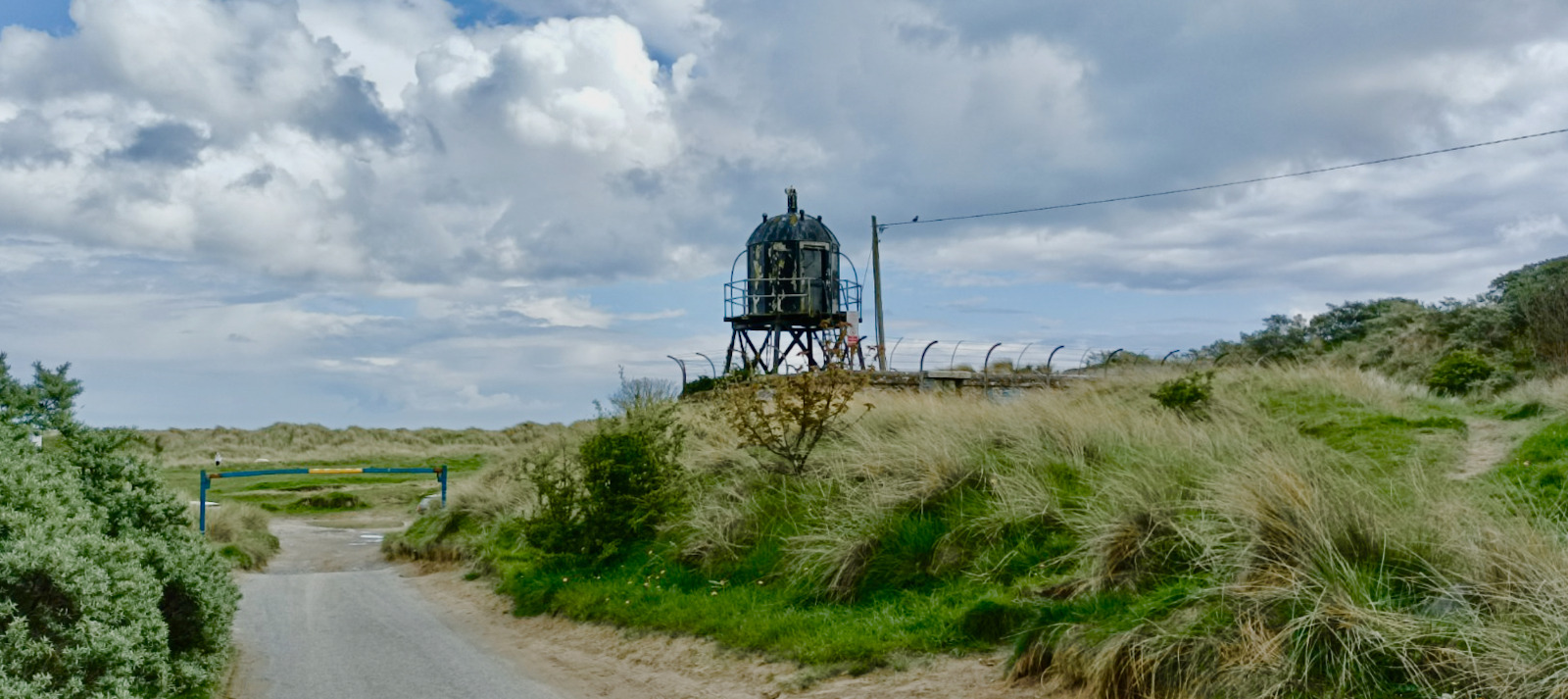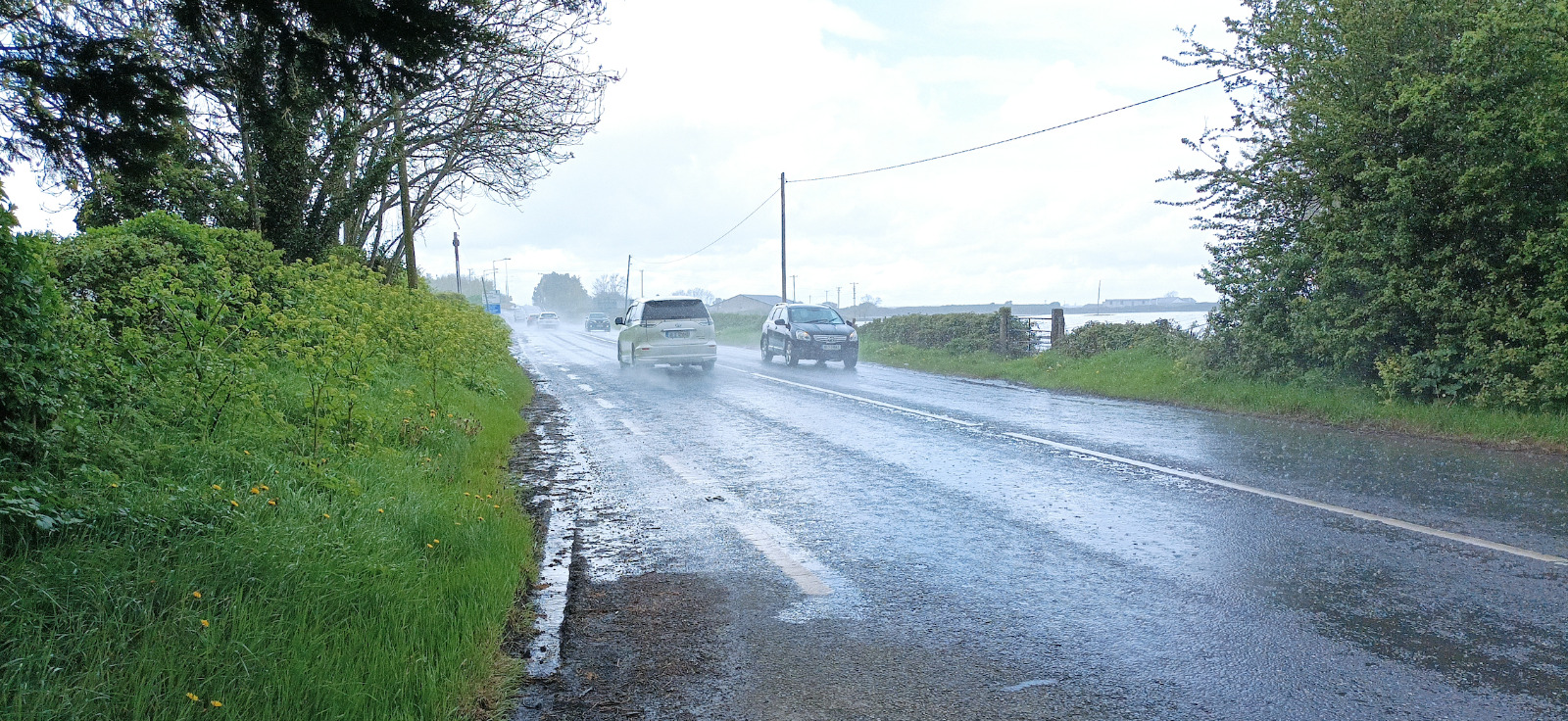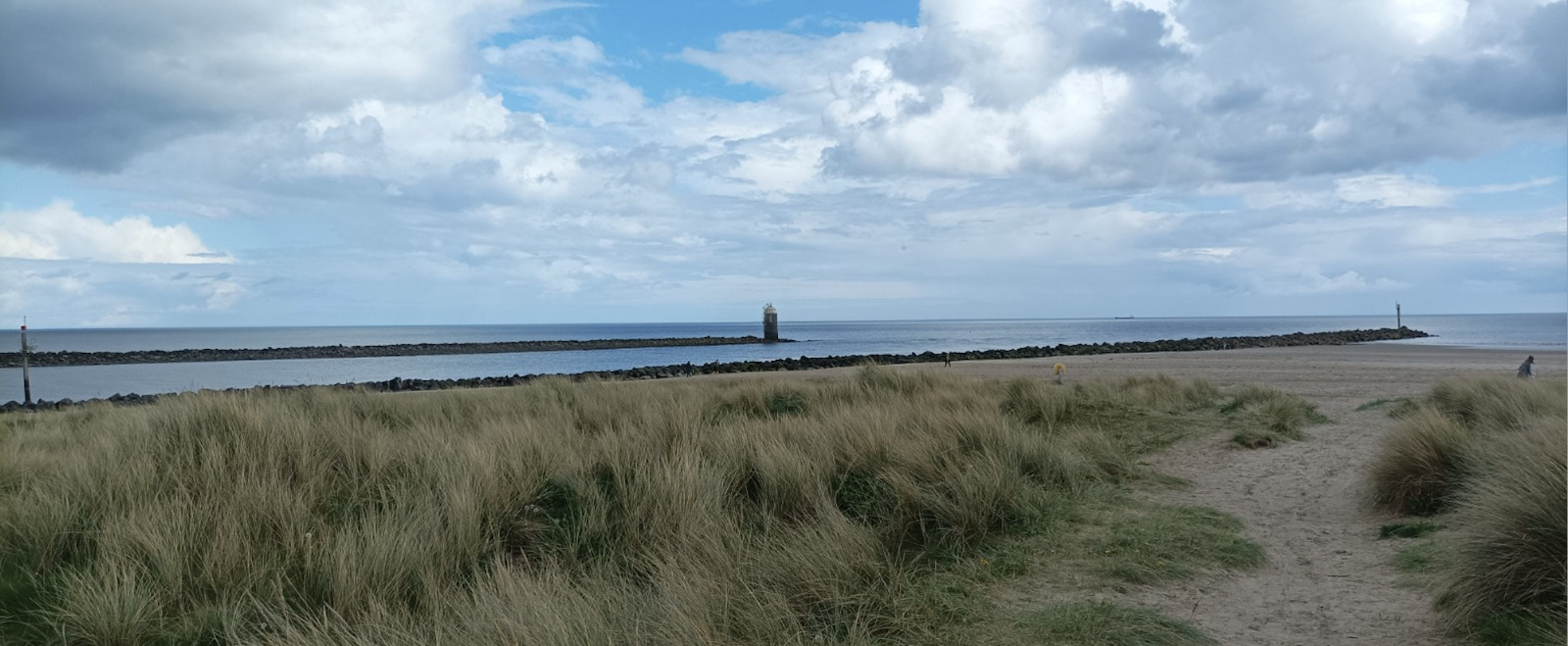8 Mornington (Drogheda)

1154, April 30, 2023
This time, I am off to Drogheda so I drive to Balbriggan and find an old-school car park between the sea and the park parallel to it, full of football pitches and screaming spectators. It’s the kinda car park I love. Puddles and gravel, bounded by trees. There’s fellas my age, ish, getting dressed for five-a-side, and chunflas in their Sunday Football Finest, walking into battle with their studs chomping orkwordly off the hard ground, as excited as a gaggle of ladies in heels heading off for a night out. As soon as I park up, I nip into the foliage and drain the lizard goodo. Then I whip Blue Thunder out of the boot, get myself dressed, and scope out a quick bit of kids’ football. That sport breaks my heart. It used to be my favourite activity in life, to play, to watch and to read about. Yet I’ve grown up and it hasn’t, so I’ve had to move on.

I leave them at it and hit the Doolittle, painfully aware that my fun occurs in solitude, not in a team. This trip’ll be a piece of piss: 20k as the commuter flies, 30k on the bike, as flat as a North Leinster pancake. The only dangers are intermittent shars and the drabness of the short Meath coast. As soon as you leave County Dublin, just north of Balbriggan, the coast line takes on the perimeter of a straight line. The road parallel is one of those horrific secondary roads, beloved of tractors, Bus Eireann and speeding locals. Wide enough to drive comfortably and fast, but narrow enough to make cycling loud and miserable. I really need a name for these roads. After a few minutes I can smell rain so I stop off at a bus shelter. It’ll be a few minutes before the shars arrive but I know they’ll be heavy and I won’t get shelter elsewhere on this exposed road. There are some mute Ukrainians waiting for a bus and they must be being housed nearby. I see a sign for Gormonstown Army Camp and perhaps they are staying there, the poor things. I think of Andy and Tanya and Lan, still cramped up with Oskar’s family in Arnhem, and I pray to God that their lives improve soon. It was great to see them last year and we must invite them over here for a visit soon. The rain is taking longer than I expected, and it reminds me of the time that our big sister Maryanne took me and Maggs for a day out in Mosney, the Irish Butlins, not far from here. We were stuck on what mustabeen this road for donkeys, waiting for the boola bus. Yet the memory remains happy. The rain eventually buckets down and soon the bus arrives. More Ukrainians dismount including an old lady who starts getting out her neat little umbrella. I put my hand up to tell her to stall the ball five minutes so she sits it out and, sure enough, the rain stops three minutes later. She smiles in shock and thinks I’m a wizard, then scampers off, as do I. Of course I get hit by another shar a few minutes later so I get off, hide under a tree, and take the photo above.
.jpeg)
It’s not long before I can turn off the road towards Mosney and it’s a delight because I’m into hedgerow Ireland with fields and quiet roads. This is a nullspace of land trapped between the main road, the featureless coast and a mid-sized river cutting across Julianstown and Laytown. I cycle down to the once-abandoned holiday centre, and I can still remember the excitement of the water slides and the G-forces crushing my nine-year-old body on the yellow spinning ride – The Space Round Up apparently. But now my emotional rush is for the refugees inside, locked behind bars in this repurposed reception centre. I think of Peter Sheekey and the English language school he runs in Ballybough to help these unfortunate people, each with their own hellish story, and I’d love to go back and teach more of them. There’s cameras everywhere, a security booth and some kids running around on bicycles. I can’t go in for a goo, which is a shame as I could do with a trip down memory lane. The Community Games used to be here – the Olympics for Irish teenagers – housing like twenty-five hundred of them every year, competing for medals and a shift, as documented by RTE, where you can also catch a young Ryle Nugent sounding about 4% less Leinster Rugby.
8.1 The Meath Gold Coast
.jpeg)
I take a wrong turn and find myself on the way back to the main road but a dogwalker puts me wide and sends me over a pedestrian bridge to Laytown, on the other side of the Nanny river. I’m delira to see a small concave beach below, as the tiny estuary meanders into the sea, putting some texture on the coastline. It seems too shallow here for fishing boats. I stop in the village shop, Pat’s Supermarket, and the view from here is a blissful mix of grass and river and sea and sand, which must make for an unusually varied hangout space. For Ireland, like. Cars have been superimposed, of course, many of them parked by the train station which must bring a disproportionate amount of life to this tiny village.
.jpeg)
I take a quick gawk at the vast beach around the corner and it glares back at me all the way to the horizon, wide and straight, a magnitude suited to the horse racing which takes place here once every apparently year.
.jpeg)
I stall it back to the coast road and see a lovely church with a few dozen congregants outside, dolled up for what appears at first to be a wedding, but turns out to be a First Holy Communion, with many mini-brides being offered up to our Lord. Communions remind my wife of ceremonies they have in Oman when barely pubescent girls are promised to their future husband, and I wonder if that is their origin here in Ireland, or if there was ever any #grabbing after the mass. I feellike I can’t be taking a photo of the peopled front of the church but it’s just as well because it is a filmset frontispiece, a survivor from the old church, with a short glass tunnel connecting it to the main hallway, a weird-ass modern jobbie built to house 800 sinners. Seemingly the church overlooks the sea, which is fairly Leinster Rugby.
8.2 Ancient network of lights

I continue along the coast road, through the entire census town of Laytown-Bettystown-Mornington-Donacarney, and the Bettystown segment suffers from having houses on both sides of the road, obscuring its inherent splendour. After the links golf course on the right, I’m in Mornington, my destination, a place I’ve never heard of. It sits on the corner of the large, unruly Boyne Estuary, making it less coherent than little Laytown, but that makes for more varied housing and exploration among the sand dunes. I dismount, expecting to walk some kind of pier to the lighthouse, but the causeway is unwalkable and the stone beacon slash lighthouse is on the other side of the river.
.jpeg)
There are sand dunes and pathways and the odd bit of tarmacked road scattered around. The complexity of the coast is more than I had bargained for so my lack of preparation means I struggle to understand the set up. It turns out there are three spidery beacons, standing on stilts, almost hidden among the sand dunes. One is black and looks at first to be burnt out, and nearby is a white variant. These are Drogheda East and West Lighthouses, while North Lighthouse sits in the back of someone’s legiterally gaff, not far from an ancient stone tower. These lighthouses used to be moved around in response to shifting sandbars, and that is why they sit on stilts, and are not incorporated into the land like any normal building with foundations. The shifting sands problem seems to have been reduced by the causeway sticking out to sea. The same problem used to bedevil ships arriving in Dublin until the South and North Bull Walls were built, and much of the sand was dragged over to what is now Bull Island, so it is interesting to see the more natural state of affairs here, and how the transition space between the sea and inhabitable land is a live situation, changing at unfamiliar pace somewhere between the quotidian and geological.
.jpeg)
Nonethenevertheless, it’s disappointing to find lighthouses buried within the land, where they are reduced to being disused machines rather than being that glorious embodiment of functional and symbolic. And the ugly fella sitting out at actual sea is a, tobefair, disappointment. It feels like I haven’t conquered a endpoint and I’m walking around an old battlefield trying to reconstruct a more interesting time. Thankfully there are two old stone erections, pointing to an earlier era of navigational aid, the Lady Finger and The Maiden Tower, named after Virgin Queen Liz. The area merits further investigation, maybe with a curious dog, and I have categorised it like a lot of things in life as: it’s not shite, you just haven’t worked out how to enjoy it yet.
I follow the river for seven cloudy clicks back in to Drogheda, a town whose inner aesthetic I am also yet to unravel. I spent quite a bit of time on the piss here as a teenager with Boring Mick, and we even rang in the Millenium in his gaff, hoping to Jaysus that the Y2k bug wouldn’t reset civilization. I know my way to the train station for a swift exit and it’s not long before I’m in Balbriggan and then my Jammer and then home, thankful for the excellent transport links that exist on this unromantic strip of the island. I’m also delighted to discover a new approach to travel. Bike out. Train Home. This doubles your distances and trims off the misery of recapitulating your half-adventure on overly familiar roads. Plus, doubling your radius quadruples the area you can cover. Furtherplus, if you drive to your start point, cycle out and train it back to the MC Hammer, then your range is shaped like a washer, a ring of of possible journey around a circle of starting points. In this way, the entire island can become my oyster, and now I can now spread my wings and set my wheels in motion.